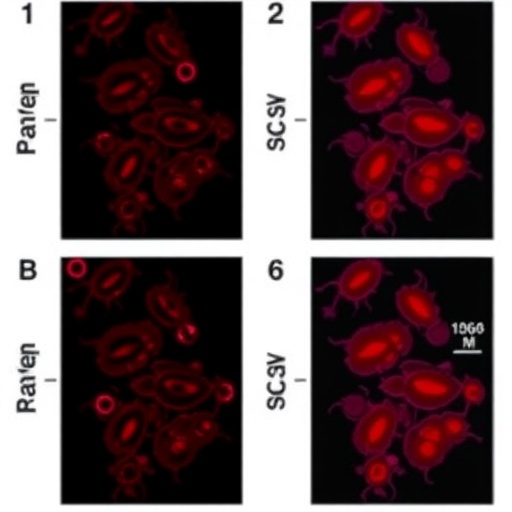In the relentless battle against cancer, the tumor microenvironment (TME) poses one of the most formidable barriers to effective immunotherapy. Central to this hostile landscape are monocyte-derived macrophages (mo-macs), whose role in suppressing immune responses within tumors has been well recognized but remains incompletely understood. A groundbreaking study now unveils how the dysregulation of myeloid progenitors—the early precursors to these macrophages—drives the immunosuppressive machinery cloaking tumors, opening fresh avenues for therapeutic intervention.
Researchers have delved into the intricate developmental trajectory starting from bone marrow myeloid progenitors, through circulating monocytes, culminating in the immunosuppressive mo-macs that infiltrate lung tumors. By employing paired transcriptomic and chromatin accessibility analyses in both murine models and human patients with lung cancer, the study captures the dynamic epigenetic and gene expression landscape that shapes this continuum. The scale and precision of this approach illuminate the molecular underpinnings dictating macrophage functionality within cancer.
A striking revelation from the investigation centers on the pivotal transcription factor NRF2 (encoded by Nfe2l2). Unlike its classical roles primarily defined in oxidative stress response, NRF2 emerges here as a master regulator reprogramming myeloid progenitor cells in the bone marrow. Lung tumors orchestrate the priming of chromatin accessibility at NRF2-associated loci, effectively conditioning progenitors to adopt a cytoprotective state. This adaptation enhances the myelopoietic output favoring monocytes that are pre-equipped to support tumor progression rather than immune defense.
This NRF2-driven epigenetic priming operates as a double-edged sword. While it shields progenitor cells from oxidative stress inherent in the tumorous milieu, it concurrently dampens the interferon response pathways critical for antitumor immunity. The paradoxical suppression of immune stimulation facilitates a permissive environment for tumor-supportive macrophage populations to flourish. These myeloid progenitors thus become unwitting allies of cancer in evading immune surveillance.
Further intrigue unfolds as the NRF2 axis activity not only initiates in the bone marrow but also intensifies during the differentiation of monocytes into mo-macs once they infiltrate the TME. This amplification reinforces the cytoprotective and immunosuppressive phenotypes essential for macrophage survival and function amidst the harsh conditions of the tumor niche. The findings suggest an epigenetic “memory” imparted on progenitor cells that is then magnified within tumors to sustain immune evasion.
The functional importance of NRF2 in sustaining tumor-supportive macrophages was rigorously tested through genetic ablation and pharmacological inhibition strategies. Loss of NRF2 activity led to a significant reduction in mo-mac survival and their immunosuppressive capabilities within the TME. Consequently, this shift liberated natural killer (NK) cells and T lymphocytes from suppression, reinvigorating endogenous antitumor immunity. The therapeutic implications hint at re-sensitizing tumors to immune system attack by targeting a heretofore overlooked progenitor pathway.
In addition to reversing local immunosuppression, NRF2 inhibition synergistically enhanced the efficacy of checkpoint blockade immunotherapies, which have revolutionized cancer treatment but remain ineffective in a large subset of patients. The study suggests that curbing dysregulated myelopoiesis can remove a critical roadblock to immune checkpoint success, offering a combinatorial strategy to amplify durable responses in refractory lung cancers.
This research also underscores a broader paradigm shift, emphasizing the importance of earliest myeloid progenitor stages as therapeutic targets. Rather than focusing solely on suppressing established immunosuppressive cells within tumors, reprogramming progenitor epigenetic landscapes at the source could recalibrate the immune composition of the TME long before macrophages acquire their pro-tumorigenic identity. Such early interventions may yield more profound and sustained immunomodulatory benefits.
At a mechanistic level, this study contributes novel insights into how tumor-derived signals remodel hematopoietic compartments distant from the tumor site, demonstrating that cancer orchestrates systemic immune remodeling via epigenetic reconfiguration. The activation of NRF2 as a cytoprotective strategy in progenitors reveals a sophisticated interplay between oxidative stress and immune regulation that tumors exploit for their advantage.
The work also prompts further questions about the specificity and reversibility of NRF2-mediated chromatin priming. Understanding whether these epigenetic changes can be durably reset and how they interact with other transcriptional circuits in myeloid lineages will deepen our comprehension of tumor-immune coevolution. Additionally, delineating whether similar mechanisms operate in other solid tumors could expand the scope of NRF2-targeted therapies.
In conclusion, this illuminating study places NRF2-driven myeloid progenitor dysregulation at the heart of tumor-associated immunosuppression. By mapping the epigenetic and transcriptional alterations from bone marrow progenitors through to tumor-infiltrating macrophages, the researchers reveal a targetable vulnerability capable of reshaping the TME. These findings offer a promising pathway to reprogram immune suppression and enhance the potency of existing immunotherapies, holding transformative potential for lung cancer treatment.
As clinical translation advances, targeting the NRF2 pathway could serve as a dual-pronged approach—protecting progenitor cell integrity while dismantling tumor-favoring immune adaptations. This study not only advances our molecular understanding of tumor immunology but also ignites hope for developing strategies that reinvigorate the immune system’s capacity to combat cancer effectively.
Subject of Research:
Myeloid progenitor dysregulation and its role in fostering immunosuppressive monocyte-derived macrophages within the lung tumor microenvironment.
Article Title:
Myeloid progenitor dysregulation fuels immunosuppressive macrophages in tumours.
Article References:
Hegde, S., Giotti, B., Soong, B.Y. et al. Myeloid progenitor dysregulation fuels immunosuppressive macrophages in tumours. Nature (2025). https://doi.org/10.1038/s41586-025-09493-y
Image Credits: AI Generated
Tags: cancer immunosuppression mechanismschromatin accessibility in cancerepigenetic regulation in tumorsimmunosuppressive tumor microenvironmentlung cancer macrophage infiltrationmacrophage developmental trajectorymonocyte-derived macrophages rolemyeloid progenitor dysregulationNRF2 transcription factor functionpaired transcriptomic analysistherapeutic intervention strategiestumor microenvironment immunotherapy






